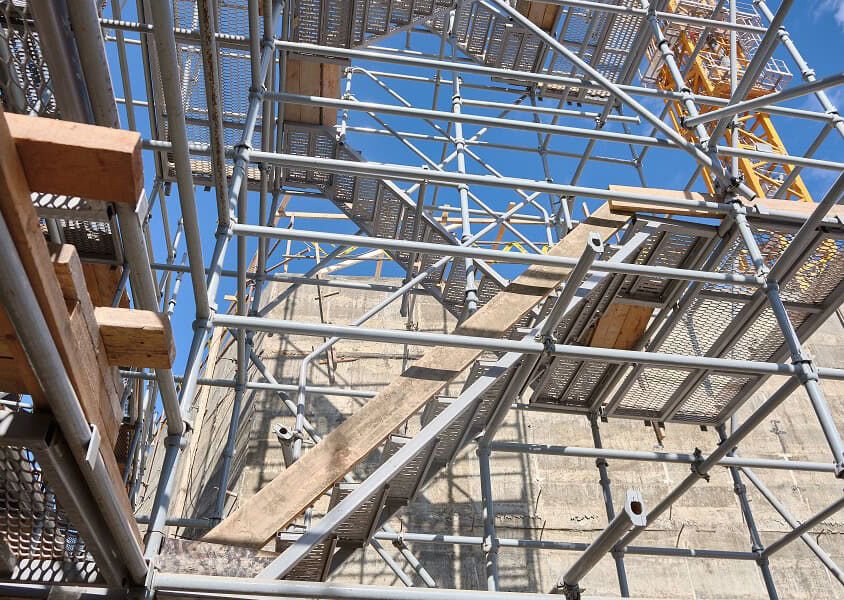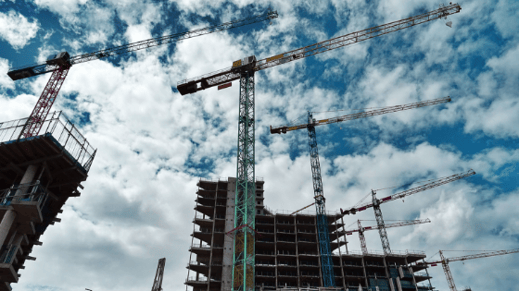Residential Scaffolding Solutions for Safe and Efficient Home Improvements
Residential Scaffolding Solutions for Safe and Efficient Home Improvements
Blog Article
A Comprehensive Guide to the Crucial Attributes of Scaffolding in Modern Building And Construction
The landscape of modern-day construction progressively relies upon reliable scaffolding systems that focus on safety, development, and effectiveness. As projects expand in intricacy, recognizing the crucial functions of scaffolding becomes important for making sure worker safety and maximizing project timelines. This guide checks out various kinds of scaffolding, highlights essential safety attributes, and takes a look at material improvements that add to efficiency and sustainability. The ramifications of these elements expand far beyond plain construction techniques, prompting a better look at just how they influence general project success and employee wellness.
Sorts Of Scaffolding
Although scaffolding systems can vary widely in design and application, they usually fall under several distinctive groups that provide to various building needs - Scaffolding. The most common types consist of supported scaffolding, put on hold scaffolding, and rolling scaffolding
Supported scaffolding contains platforms supported by a framework of posts, which give a elevated and stable functioning surface. This kind is normally made use of for jobs that call for significant altitude, such as bricklaying or external paint.
Put on hold scaffolding, alternatively, is made use of for tasks requiring accessibility to high elevations, such as cleansing or fixing structure exteriors. This system hangs from a roof or another framework, allowing workers to lower or increase the system as required.
Rolling scaffolding features wheels that enable for very easy movement across a job site. It is especially valuable for tasks that require regular moving, such as indoor operate in huge spaces.
Each sort of scaffolding is created with specific applications in mind, making sure that building and construction projects can be accomplished successfully and effectively. Comprehending these classifications is essential for choosing the ideal scaffolding system to fulfill both project demands and website conditions.
Secret Safety And Security Attributes
Safety and security is critical in scaffolding systems, as the prospective dangers connected with working at elevations can cause severe mishaps otherwise effectively taken care of. Trick safety and security attributes are vital to guarantee the wellness of workers and the stability of the building site.
First and primary, guardrails are critical. These barriers supply a physical guard against drops, considerably minimizing the danger of serious injuries. Furthermore, toe boards are often utilized to stop devices and products from dropping off the scaffold, securing employees below.
Another essential element is making use of non-slip surfaces on platforms. This attribute boosts grip, particularly in unfavorable climate condition, thus reducing the likelihood of slides and falls. Furthermore, accessibility ladders must be securely placed to help with secure entrance and exit from the scaffold.
Normal inspections and maintenance of scaffolding systems are also vital. These evaluations guarantee that all components are in great problem and working appropriately, addressing any type of wear or damage promptly.
Last but not least, correct training for all employees associated with scaffolding operations is important to make sure that they comprehend safety and security procedures and can determine possible risks. Scaffolding. Collectively, these features develop a safer working atmosphere and considerably mitigate threats related to scaffolding
Material Developments
Developments in material scientific research have considerably affected the scaffolding market, enhancing both safety and security and efficiency in contemporary construction. The introduction of high-strength click this steel and light weight aluminum alloys has actually transformed typical scaffolding systems. These products are not just lighter, making them less complicated to set up and move, yet additionally provide superior load-bearing abilities. This leads to scaffolding structures that can sustain better weights while reducing the danger of collapse.
Furthermore, ingenious composite materials, such her response as fiberglass-reinforced plastics, have emerged as feasible options. These materials are resistant to rust and environmental destruction, hence expanding the life-span of scaffolding systems, especially in severe climate condition. Making use of such products adds to decrease maintenance costs and guarantees constant performance in time.


Design Considerations
Considering the intricacies of modern-day building jobs, effective scaffolding layout is extremely important to making certain both capability and safety and security. Style considerations should encompass numerous variables, consisting of load capacity, elevation, and the certain requirements of the building and construction website. Each project presents one-of-a-kind difficulties, necessitating an adaptable strategy to scaffolding systems that can adjust to varying conditions.
Architectural stability is important; as a result, engineers have to compute the tons that the scaffolding will sustain, including employees, materials, and tools. The choice of products plays a critical function in ensuring the scaffolding can hold up against these loads while continuing to be durable and lightweight. Furthermore, the layout needs to permit for simple gain access to and egress, helping with the smooth movement of products and personnel.
Security attributes, such as guardrails and non-slip surfaces, need to be included to minimize dangers of crashes. Furthermore, the design has to think about the surrounding atmosphere, consisting of possible threats and adjacent structures. By dealing with these style factors to consider, construction firms can enhance the efficiency of scaffolding systems and promote a much safer working atmosphere, inevitably adding to the total success of the project.
Upkeep and Inspections
The effectiveness of scaffolding systems extends beyond initial design and application; continuous maintenance and routine inspections are vital to ensuring their continued performance imp source and safety throughout the duration of a task. Normal assessments need to be performed by certified workers to determine any type of indications of wear, damage, or instability that could jeopardize the stability of the scaffolding.
Upkeep methods should consist of regular checks of architectural components, such as slabs, structures, and fittings, ensuring that all components stay free and safe from corrosion or various other degeneration. Additionally, the capability of security attributes, such as guardrails and toe boards, need to be evaluated to make certain compliance with safety and security guidelines.
Paperwork of all examinations and maintenance tasks is critical for responsibility and regulatory compliance. An organized method to record-keeping not just aids in tracking the problem of the scaffolding but likewise gives needed proof in case of a case.
Ultimately, establishing a thorough maintenance and assessment schedule will considerably lower the risk of crashes and enhance the general safety and security of the construction site. By focusing on these practices, construction managers can secure employees and copyright the job's stability.

Final Thought
In final thought, the necessary functions of scaffolding in contemporary construction include an array of critical elements, consisting of diverse kinds, essential security systems, material advancements, and thoughtful style considerations. Emphasizing safety and security with guardrails and non-slip surfaces, together with advancements in products like high-strength steel, improves both performance and sustainability. Normal maintenance and inspections are essential for guaranteeing structural stability and safety on building and construction sites, ultimately promoting effective project implementation and promoting the well-being of employees.
The landscape of modern-day construction significantly depends on effective scaffolding systems that focus on innovation, effectiveness, and safety.Innovations in material scientific research have actually considerably affected the scaffolding industry, boosting both safety and effectiveness in contemporary construction. In general, these product technologies not just enhance the performance and security of scaffolding systems but additionally align with the industry's push in the direction of sustainability, as numerous modern products are developed to be more environmentally pleasant.
Taking into consideration the complexities of modern construction projects, effective scaffolding design is critical to making certain both capability and safety and security.In verdict, the crucial attributes of scaffolding in modern-day building and construction include a variety of vital aspects, including diverse kinds, vital safety and security devices, product advancements, and thoughtful style considerations.
Report this page